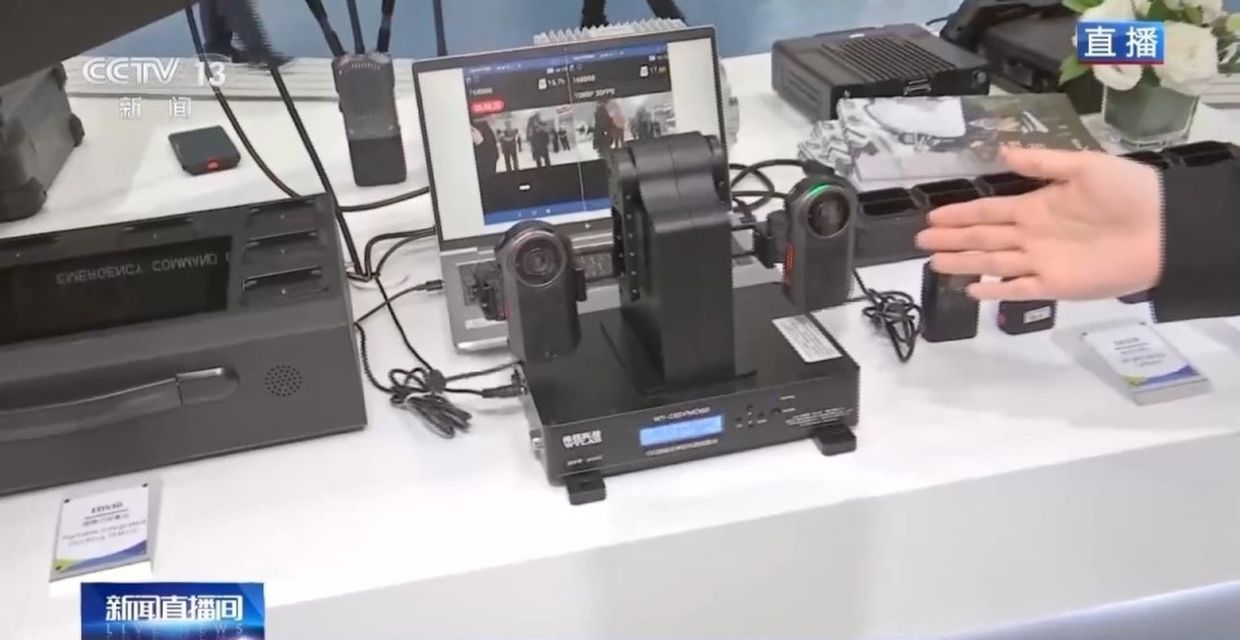AI 주도 기술 확장이 글로벌 지형을 재정의하다: 공공 안전에서 지능형 네트워크와 모빌리티까지
Author: TechDesk Global

현대 기술의 거의 모든 영역에서 2025년은 익숙한 역설을 펼치고 있다: AI 기반 시스템은 전례 없는 효율성을 약속하지만, 빠른 도입은 프라이버시, 보안, 거버넌스에 대한 의문을 제기한다. 올해 글로벌 기술 매체는 공공안전 기기, 기업 네트워크, 공급망, 소비자 기기를 연결하는 지능의 그림을 그려왔다. 조직이 파일럿에서 생산으로 AI를 확장함에 따라 데이터 처리와 모델 위험에서 벤더 의존성과 규제 준수에 이르기까지 위험 표면이 확장된다. 이야기는 더 나은 알고리즘에만 관한 것이 아니라, AI를 어떻게, 어디에 배치할지 결정하는 사회적·경제적 선택과 그 결과에 누가 책임을 지는지에 관한 것이다.

중국 경찰 기술 전시회에서 전시된 공공 안전 AI 기술로, AI 기반 감시 장치의 세계적 확산을 보여준다.
공공 안전 분야를 통해 특히 눈에 띄는 흐름이 나타난다. The Star Online은 개발도상국 경찰에 적용되는 AI 보조 얼굴 인식 감시 장치의 중국 전시를 보도했다. 더 빠른 식별과 향상된 상황 인식을 도구로 제시하는 시장은 시민 자유, 데이터 주권, 감독에 관한 시급한 질문을 제기한다. 정책입안자와 구매자들이 이익과 위험—프라이버시 침해, 남용 가능성, 고급 감시 기술의 확산—을 비교하는 가운데, 이 사례는 더 넓은 흐름을 강조한다: AI 기반 도구가 국내 경계를 벗어나 해외 시장에서 새로운 성장을 추구하고 있다. 그 함의는 범죄 대응을 넘어 외교, 인권, 그리고 생체인식 기술의 국제적 거버넌스로 확장된다.
공공 안전을 넘어, 또 다른 전선은 현대 공급망이다. 공급망에서 공급업체 가시성의 차이가 회복력에 위협이 된다. Supply Chain Brain의 보고서는 거의 절반의 조직이 여전히 보안 자세에 대한 기본 가시성을 갖지 못한다고 지적한다. 공급업체, 계약자, 서비스 제공자가 빠르게 디지털화되는 생태계에서 활동할 때, 제3자 위험, 데이터 흐름, 사건 대응 계획의 맹점은 운영 중단, 데이터 유출 또는 규제 미준수로 이어질 수 있다. 그 결과는 단절되기 쉬운 글로벌 네트워크이며, 한 개의 손상된 공급업체가 조달, 제조, 물류 전반으로 연쇄될 수 있다. 이를 해결하기 위해 조직들은 실사 강화, 지속적 모니터링 실행, 소싱 결정, 계약, 지속적 공급자 관계에 위험 거버넌스를 내재하도록 촉구받고 있다.
학계와 정책 차원에서도 2025년에는 AI를 사회 친화적 결과로 이끄려는 공동 노력이 강화되었다. MIT의 Generative AI Impact Consortium Symposium은 연구자, 업계 리더, 정책 입안자들을 한자리에 모아 생성형 AI가 작업, 교육, 거버넌스를 어떻게 재편할 수 있을지 논의했다. 대화의 중심은 책임 있는 배포, 모델 위험 관리, 데이터 사용 규범, 노동력 변화에 초점이 맞춰졌다. 핵심 메시지는: 진보는 컴퓨터 과학을 윤리, 법, 경제학, 경영과 융합하는 학제 간 협력이 필요하다는 것인데, 이는 AI가 의사결정에 스며들수록 책임성, 투명성, 포용성에 대한 실용적 표준을 마련해야 한다는 것이다.

Huawei Connect 2025에서 선보인 Huawei의 Xinghe Intelligent Network 컨셉, AI 중심 네트워킹을 보여준다.
AI가 접목된 네트워킹의 선두 사례는 Huawei에서 온다. Xinghe Intelligent Network가 Huawei Connect 2025에서 선보여졌다. 이 솔루션은 네트워크와의 깊은 통합을 가속화하도록 설계된 AI 중심의 3계층 아키텍처로 설명된다. 네 가지 핵심 제공 서비스—Xinghe AI Campus, Xinghe Intelligent WAN, Xinghe AI Fabric 2.0, Xinghe AI Network Security—은 결정론적 대기시간, 무손실 패킷, 대규모 AI 보안을 제공하는 것을 목표로 한다. 보안 측면에서 Huawei는 기기 내 방화벽, 미지의 위협에 대한 에뮬레이터, 그리고 24시간 자율 운영(O&M)을 결합해 네트워크의 회복력을 유지한다. Wi-Fi 센싱은 인간의 존재를 확인하기 위한 센티미터 수준의 감지를 약속하고, 업계 최초의 스파이캠 탐지 무선 접근점은 민감한 환경에서 기밀 정보를 보호하는 것을 목표로 한다. 이 모든 것을 종합하면 이 아키텍처는 AI가 캠퍼스나 기업 네트워크 전반에 내재되어 빠른 배포와 더 스마트한 정책 집행을 가능하게 하는 비전을 제시한다.

AI 가 모듈식 데이터 센터로 AI 지원 워크로드를 가속하고 확장 가능한 용량과 유연성을 제공한다.
The enterprise network market itself is evolving to support AI-driven workloads. Electronics Weekly reports a 13.2% year-over-year rise in the Q2 WLAN market, driven by the deployment of Wi‑Fi 6E and Wi‑Fi 7. This expansion underlines the demand for secure, high-throughput connectivity that can handle real-time analytics, large device populations, and AI-enabled applications across offices, campuses, and warehouses. For IT leaders, the message is clear: robust wireless infrastructure remains a foundational layer for intelligent operations, and vendors are delivering smarter software-defined networking, analytics, and security tools to manage growing traffic and interference.

AI 기반 기능의 한 세대를 강조하는 iPhone 17 출시 시각 자료와 우수한 디스플레이 기술.
On the consumer front, AI-enabled features are becoming increasingly central to device upgrades. The Times of India coverage of the iPhone 17 launch emphasizes 120Hz display across all models, a 48‑megapixel Fusion camera, and the A19 chip—markers of a premium, AI-savvy smartphone experience. With pricing starting around Rs 82,900 for the base model, Apple continues to fuse on-device AI processing with advanced imaging pipelines to deliver faster, more capable devices. The shift toward AI-enhanced photography, real-time translation, and intelligent assistants signals how mass-market products will increasingly shape user expectations and set benchmarks for the wider ecosystem.
Chrome에 내장된 Google Gemini로 AI 기반 브라우징과 생산성을 확장한다.
In software ecosystems, AI is becoming a pervasive helper in everyday tasks. The Hindu notes that Google has integrated Gemini into Chrome, extending AI-assisted browsing, translation, and task automation while navigating a complex antitrust landscape. For users, this translates into faster access to contextual insights, more intelligent autofill, and smarter interaction with web content. For regulators, it raises questions about competition, privacy, and the responsibilities of large platforms to manage data use and model behavior. The Chrome integration exemplifies the broader trend of AI moving from backend servers to client-facing experiences that shape how people search, learn, and work.
The mobility sector reflects a parallel shift toward AI-enhanced efficiency and sustainability. Times Now reports Hyundai’s plan to launch more than 18 hybrid models by 2030, including the first locally designed EV for India, supported by a localized supply chain. The strategy emphasizes affordability, region-specific products, and advanced battery technology as levers to accelerate the transition to electric mobility. AI and analytics underpin production planning, demand forecasting, and after-sales service optimization, helping automakers tailor offerings to varied markets while reducing costs and emissions. The regional focus also aligns with broader economic strategies to build domestic capability and resilient supply chains in a rapidly evolving energy economy.

현지 생산으로 뒷받침되는 18종 이상의 하이브리드와 인도 최초의 EV를 포함한 Hyundai의 계획.
The convergence of AI across these domains—surveillance, supply chains, networks, data centers, consumer devices, and mobility—highlights an overarching imperative: governance and safety. MIT’s symposium and industry initiatives stress the importance of structured, cross-disciplinary collaboration to manage AI risk while enabling innovation. Huawei’s network platform demonstrates how AI can be embedded in the infrastructure that underpins commerce and daily life. At the same time, market data from WLAN vendors, automotive manufacturers, and consumer electronics firms show sustained demand for AI-enabled capabilities. The evolving ecosystem will require robust security architectures, privacy protections, transparent data practices, and adaptable regulatory frameworks that can keep pace with rapid technological change.

2분기 WLAN 시장 성장은 고성능 무선 네트워크에 대한 수요를 보여준다.
In sum, the global tech landscape in 2025 is shaped by AI-enabled capabilities spreading across sectors. The expansion offers substantial productivity gains and new business models, but also raises governance, safety, and competitive concerns that policymakers and industry players must address collectively. The next era will hinge on the ability of organizations to build resilient, privacy-preserving systems that can scale with AI while maintaining trust and accountability across borders.